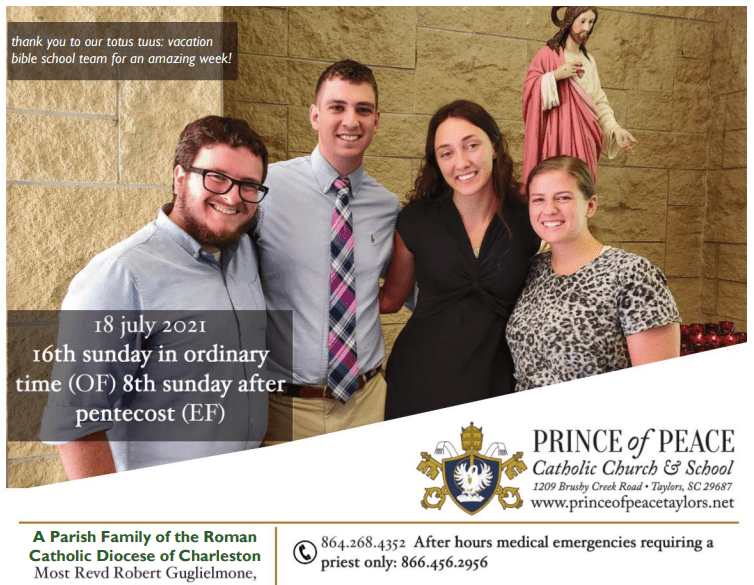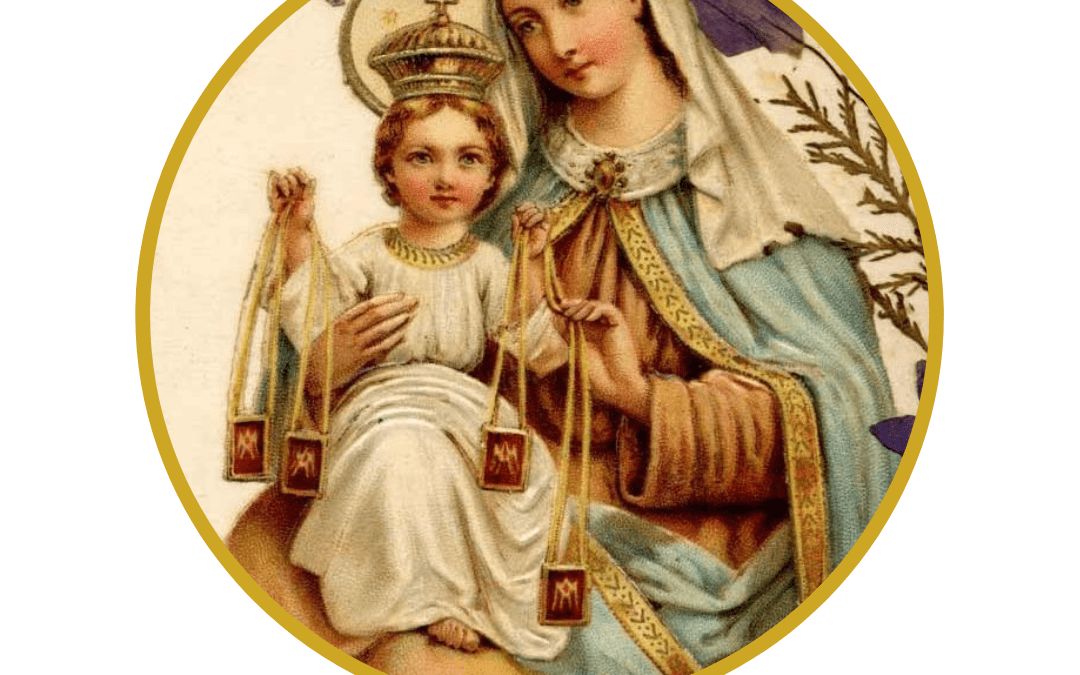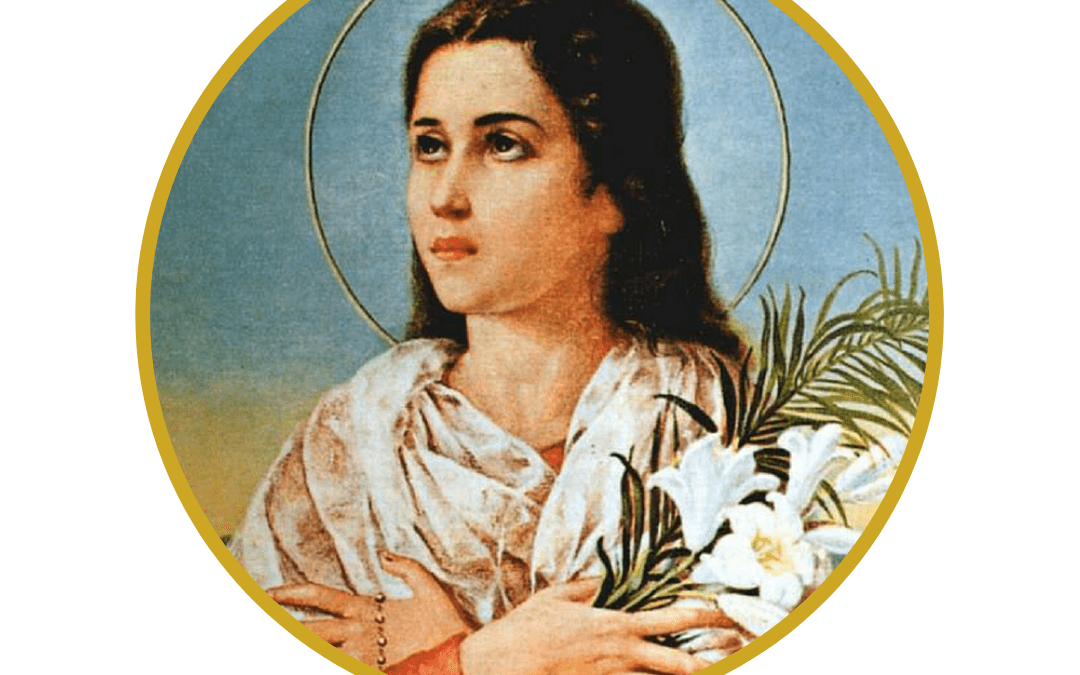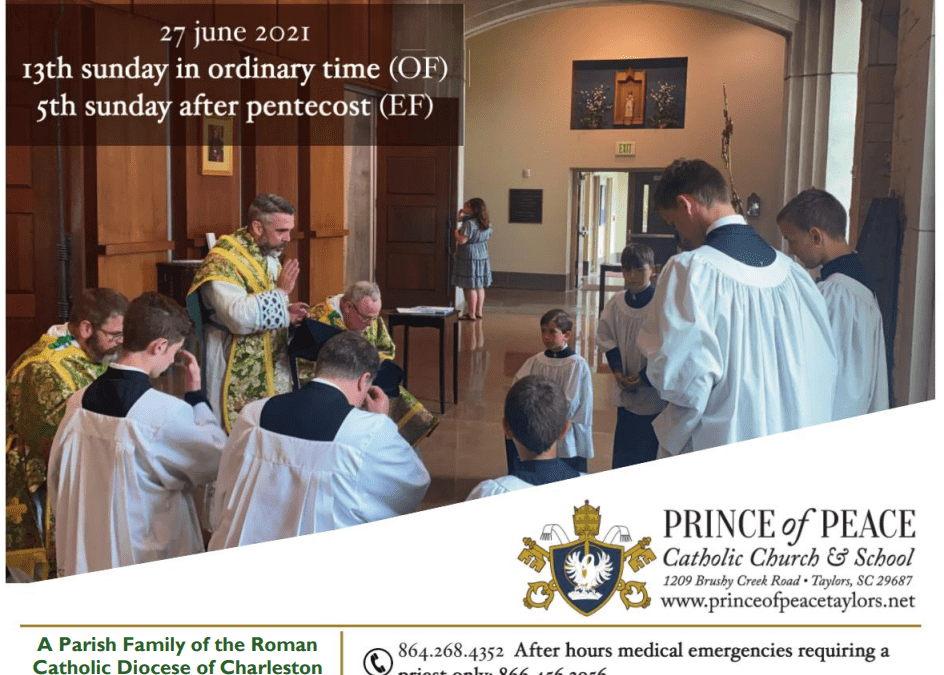
18 July 2021 Bulletin
Click to read this week’s bulletin: 18 July 2021 Bulletin

Click to read this week’s bulletin: 18 July 2021 Bulletin

Click to read the 11 July 2021 Bulletin!

16 July: Feast of Our Lady of Mount Carmel. This liturgical feast was likely first celebrated in England in the 14th century to give thanksgiving to Mary, the patroness of the Carmelite Order. The Order was founded at the site thought to have been the location of Elijah’s cave, 1,700 feet above sea level on Mount Carmel. (The mountain overlooking the Mediterranean Sea on which the prophet Elijah famously challenged the priests of Baal and won the people over to the true God.) According to Carmelite tradition, hermits lived at the site from the time of Elijah until the Carmelites. They think that from the time when Elijah and Elisha dwelt on Mount Carmel, priests and prophets, Jewish and Christian, lived holy lives at the adjacent fountain of Elisha. A Carmelite monastery was founded at the site shortly after the Order itself was created, and was dedicated to the Blessed Virgin Mary under the title “Star of the Sea” (“stella maris” in Latin). The Carmelite Order has grown to be one of the major Catholic religious orders worldwide, although the physical monastery at Carmel has had a difficult history. During the Crusades, the monastery often changed hands (it was converted into an Islamic mosque, a hospital, and then in 1821 was destroyed). A new monastery was constructed on Mount Carmel over a cave. The cave, now the crypt of the church, is called “Elijah’s grotto” by the Carmelite friars who have custody of the monastery. One of the oldest scapulars is also associated with Mount Carmel and the Carmelites. The Brown Scapular of Our Lady of Mount Carmel, according to Carmelite tradition, was presented by Our Lady to St. Simon Stock (the Carmelite Father General) on July 16, 1251. Our Lady gave Saint Simon the following promise, saying: “Receive, My beloved son, this habit of thy order: this shall be to thee and to all Carmelites a privilege, that whosoever dies clothed in this shall never suffer eternal fire… It shall be a sign of salvation, a protection in danger, and a pledge of peace.” The Carmelites refer to her by the title “Our Lady of Mount Carmel.” The spread of the Carmelites in Europe is also largely attributed to the work of St. Simon Stock. The Carmelite Order was formally approved in 1274 at the Council of Lyon. The Feast of Our Lady of Mount Carmel entered the Church calendar in the 18th century. However, since the 15th century, devotion to Our Lady of Mount Carmel has centered on the Brown Scapular, a sacramental associated with promises of Mary’s special aid for the salvation of the devoted wearer. {Note: wearing the Scapular demonstrates a commitment to follow Jesus, like Mary, the perfect model disciple of Christ. It is an expression of the belief that the bearers of the scapular will reach heaven, aided by Mary’s intercession. The Carmelites insist that it is not a magical charm, an automatic guarantee of salvation, or an excuse for not living the Christian life. It is instead a sacramental approved by the Church for centuries which demonstrates a commitment to follow Jesus, like Mary, and to live a life of prayer and faithfulness to God.}
Ideas for celebrating this feast at home:
(sources: saintsfeastfamily.com; catholicculture.org; franciscanmedia.org; catholicnewsagency.com; traditionalcarmelite.com)

6 July: Feast of Saint Maria Goretti, virgin and martyr. Maria was born in 1890, one of six children from an impoverished farming family in Italy. In exchange for farm work, the Goretti’s lived in the owner’s abandoned factory. They shared it with another poor family, the Serenelli’s (Giovanni and his son, Alessandro). The farmland they worked was swampy, mosquito infested, and difficult to work. Maria’s father contracted malaria and died when she was nine. Maria’s mother, Assunta, had to take her husband’s place in the fields. This left Maria to take her mother’s place. Maria cooked, cleaned, did laundry, and cared for younger siblings. Maria never complained, she was an extremely pious child. In contrast, Alessandro was a rough youth, given to drinking, swearing, and callous behavior. He had impure thoughts toward Maria and would speak to her crudely. Maria, in her great love for God, abhorred his behavior. One day, Alessandro attacked Maria. She resisted his sinful behavior saying, “No! It is a sin! God does not want it!” Alexander stabbed her fourteen times. At the hospital, doctors tried to save Maria’s life. She experienced horrific suffering, undergoing surgery without anesthesia. Halfway through the surgery, the doctor said, “Maria, think of me in Paradise.” Maria looked up and said, “Well, who knows which of us is going to be there first?” She did not realize how terrible her situation was, and the surgeon replied, “You, Maria.” She said, “Then I will think gladly of you.” Despite valiant effort, doctors couldn’t control Maria’s bleeding or infection. After twenty excruciating hours of suffering, Maria died at the age of 11. In her last moments the priest asked Maria to forgive her attacker. Her last words were “I forgive Alessandro Serenelli …and I want him with me in heaven forever.” Alessandro was arrested and sentenced to 30 years in prison. While in prison, Maria appeared to Alessandro and forgave him. That act of mercy filled Alessandro with utter contrition for his crime. From that point on, he lived a life of holiness. After his release, he sought out the forgiveness of Maria’s mother. Assunta told him, “If Maria forgives you, and God forgives you, how can I not also forgive you?” The two went together to Mass and received Holy Communion side by side. Assunta then adopted Alessandro as her own son. He eventually joined the Capuchin Franciscans as a lay brother. On April 27, 1947, Maria was beatified; she was canonized on June 24, 1950 by Pope Pius XII. Alessandro Serenelli was in attendance at that historic ceremony, where the young girl he murdered was declared a saint. Maria’s canonization was also attended by Assunta, the first time in history that a mother was present to witness the canonization of her own child. Also present were Assunta’s four remaining children. The crowd that attended Maria’s canonization, estimated at 500,000, was the largest ever up to that point in the Church’s history. There were so many people that it was held outdoors in St. Peter’s Square, because the massive basilica was too small to hold all the faithful in attendance. St. Maria Goretti is known as the Little Saint of Great Mercy.
“The life of this simple girl—we can see as worthy of heaven…Parents can learn from her story how to raise their God-given children in virtue, courage and holiness; they can learn to train them in the Catholic faith so that, when put to the test, God’s grace will support them and they will come through undefeated, unscathed and untarnished.” – Pope Pius XII at the canonization of St. Maria Goretti
Ideas for celebrating this feast at home:
(sources: catholicculture.org; showerofrosesblog.com; catholiccompany.com; mariagoretti.com)

Click to read the 4 July 2021 Bulletin

Click to read the 27 June 2021 Bulletin
Recent Comments